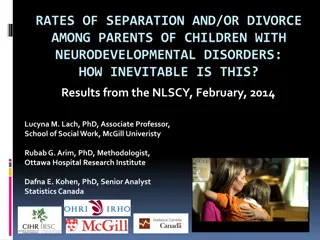National De-Worming Day and Deworming Efforts in India
National De-Worming Day is a significant initiative in India to combat Soil-Transmitted Helminths (STH) infections. The country faces challenges such as varying effectiveness of deworming programs, low coverage, and the need for comprehensive efforts at the state level. Various deworming programs targeting different age groups and risk factors have been implemented, with the bundling of deworming with Vitamin A for children being a notable strategy. However, there is a crucial need for increased coverage and coordination to address deworming comprehensively across all states.
Download Presentation

Please find below an Image/Link to download the presentation.
The content on the website is provided AS IS for your information and personal use only. It may not be sold, licensed, or shared on other websites without obtaining consent from the author. Download presentation by click this link. If you encounter any issues during the download, it is possible that the publisher has removed the file from their server.
E N D
Presentation Transcript
National De-Worming Day Dr. K. Sonvani D.D- NHM
CONTEXTUALIZING NATIONAL DE-WORMING DAY Only a few States currently run effective school and Anganwadi based deworming programs Some run relatively ineffective programs with sporadic deworming efforts and low coverage Others have no deworming programs at all Considering the situation as well as the fact that as per WHO, India is endemic for STH, Government of India is renewing its focus on all components of deworming including mapping of State/UT wise STH prevalence.
BUNDLING OF DE-WORMING WITH VIT-A FOR CHILDREN 1-5 YEARS Only 11 states are providing De-Worming, bundled with Vit-A National Coverage- 68.6% (last round) State Coverage- 65% ( SSM- last round)
DE-WORMING UNDER WIFS (2012) Bi-Annual De-Worming for adolescent boys and girls from 10-19 years of age Supervised administration in school and AWC (for drop-out girls) National Coverage: 9.2% (23 states and UTs, August 2014) State Coverage: Convergence and reporting issue. Not able to capture it correctly
DE-WORMING UNDER NIPI (2013) NIPI just added two new groups to the existing under five and 10-19 years groups That is; children from 5-10 years and Women in Reproductive Age group (20-49 yrs age group who are not pregnant, nor lactating) All these two new age groups have not yet implemented in the state of Chhattisgarh. Although procurement of IFA and Albendazole are approved in the ROP, but through a condition of submitting a clear implementation plan
DE-WORMING UNDER LYMPHATIC FILARIASIS (NVBDCP) Annual MDA of single dose of Albendazole with DEC Strategy: For 5 years or more to the eligible population (except pregnant women, children below 2 years of age and seriously ill persons) to interrupt transmission of the disease 16 endemic districts in Chhattisgarh where in MDA is being provided
NEXT DE-WORMING DUE/PLANNED IN THE STATE SSM (Children under 5) WIFS (10-19 years) Lymphatic Filariasis (in 16 endemic districts) for 2 years and above except Pregnant Mothers March 2015 February 2015 February 2015 Procurement under process Stocks available Drugs yet to come Can be merged with NDD on 10th Feb, all children can be administered. (Opportune timing) Will be conducted in March and no interventions on NDD for them. GOI agreed Operational plan to be finalized In LF districts, de-worming should not be done if NVBDCP is ensuring to De- Worm in February (To be finalized) * GOI guideline on NDD: L.F endemic districts to be excluded for National De- Worming Day IF there had been MDA round in the past 5 months.
L.F ENDEMIC DISTRICTS IN THE STATE 1. Ambikapur 2. Balrampur 3. Surajpur 4. Bilaspur 5. Mungeli 6. Dhamtari 7. Durg 8. Balod 9. Bemetara 10. Janjgir Champa 11. Jashpur 12. Mahasamund 13. Raigarh 14. Raipur 15. Balodabazar 16. Gariyaband
MANAGING ADVERSE EVENTS A coordinated approach should be established between the Health Department, the Education Department and WCD (ICDS) Department of the respective State/UT Government. All functionaries to be geared up with clear understanding of their roles and responsibilities prior to deworming day to respond effectively and timely incase of adverse events on both the days i.e 10th Feb and 13th Feb, 2015. The phases for managing adverse event are: Preparatory phase Managing adverse event on Deworming Day Managing adverse event after Deworming Day Detailed guideline/ SOP would be shared in the orientation training


